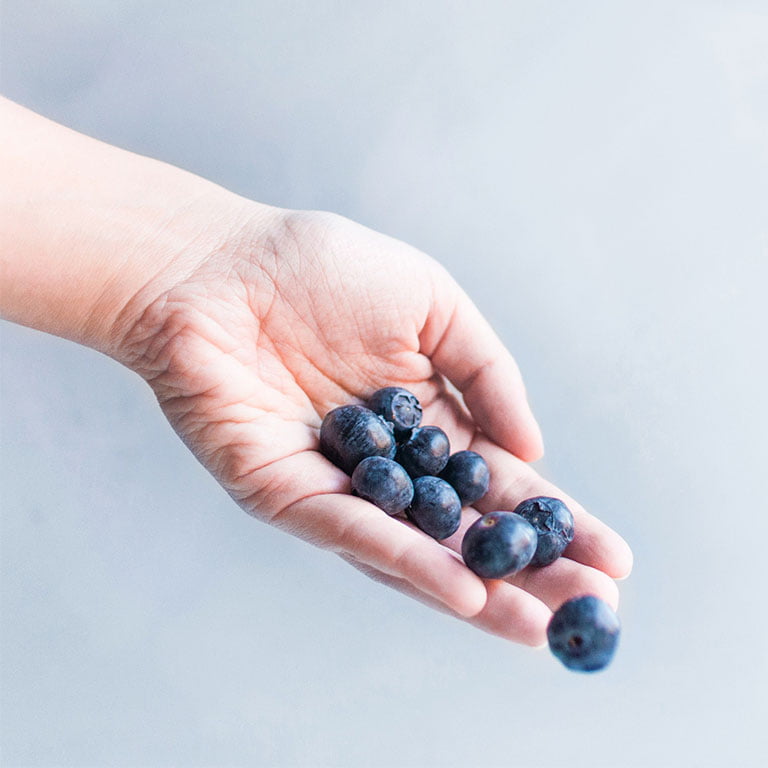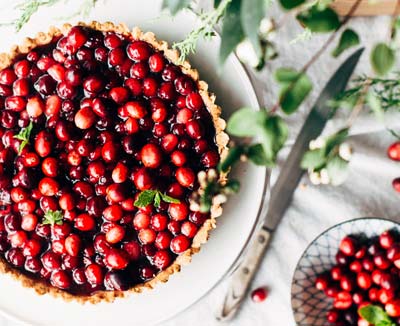
Blueberries and their benefits for your body
Despite their small size, blueberries or cranberries have numerous advantages thanks to their antioxidant properties, as well as having very few calories. This is why they are considered to be a super fruit.
We will tell you all about blueberries and where they come from, as well as the difference between blue and red berries and their nutritional values. If you have not heard of proanthocyanidins, we will show you the important role played by these polymers (macromolecules) present in these fruits. Blueberries have a special place in our shopping basket and on our summer meals.
Main benefits of blueberries
The list of positive effects of blueberry consumption is long. Specialised media such as Medical News Today and international reference websites such as Healthline highlight, among others, the following:
- Blueberries have two 'star effects': they are antioxidants and bacterial anti-stickers thanks to their high levels of proanthocyanidins (PAC).
- They are low in calories but high in nutrients. A 148 gram cup provides four grams of fibre, 24% of the Recommended Daily Intake (RDI) for vitamin C, 36% of the RDI for vitamin K, and 25% of the RDI for manganese.
- They are good for your skin. The vitamin C content of cranberry can be as high as 24% of the RDI, and we know that this vitamin contributes to the maintenance of collagen which helps skin texture and can smooth out wrinkles.
- Help reduce urinary discomfort (due to the bacterial non-stick properties we have referred to). But they are not a treatment for infections. In these cases, it is always necessary to visit a doctor.
- Help with blood circulation. Some studies relate these berries, which are rich in flavonoids, to possible properties for maintaining circulation which help cardiovascular function. Furthermore, they do not contain sodium, which is advantageous for the well-being of the heart. On the other hand, they do contain potassium, calcium and magnesium.
- Bone wellbeing. They contain phosphorus, calcium, magnesium, manganese and zinc: your bones will appreciate these minerals for their structure. They also contain vitamin A, which plays a role in bone renewal, and vitamin K, which helps maintain bone.
- Keep the blood sugar level at bay. Cranberries contain moderate amounts of sugar (about 15 grams in a 148-gram cup), which would be explained by their high content of bioactive compounds. Studies suggest that the anthocyanidins in blueberries may have positive effects on blood sugar control.

Properties of the blueberry
The main properties of blueberries, which make them so healthy, are the following:
- 85% of the blueberry is water, which is why they are very low in calories. One cup provides only 84 calories.
- They are high in insoluble fibre, such as pectin, cellulose and hemicellulose, which benefits your gut because it goes through it almost intact. They also have soluble fibre.
- 14% of blueberries are carbohydrates. Most of these carbohydrates come from simple sugars such as glucose and fructose. They have a score of 53 on the glycaemic index, which measures how quickly some foods increase blood sugar levels, and can be taken by people with diabetes, always with the advice of their doctor.
- Their nutritional value comes from vitamins, especially vitamin C (22 milligrams per cent). As well as having an antioxidant effect, vitamin C helps maintain healthy skin, muscles and bones, because of its positive effects on collagen production.
- Other vitamins and minerals found in blueberries include manganese, which contributes to energy metabolism and the antioxidant system; vitamin E, a fat-soluble antioxidant; and vitamin K1, which helps the blood coagulation process. They also contain copper, a trace element, often low in the Western diet, which helps the immune function.
- Bilberries are rich in natural pigments, the so-called anthocyanidins and carotenoids: this is the key to their characteristic blue colour and their properties as an antioxidant.
- Their organic acids, such as oxalic acid or malic acid, not only give them their characteristic taste, but also facilitate the "bacterial non-stick" effect.
What plant does the blueberry come from?
The blueberry is a deciduous shrub of the genus Vaccinium, which reaches a height from 25 to 50 centimetres and produces these fruits, which can be blue, red or black in colour when ripe, depending on the species.
The genus Vaccinium is native to the northern hemisphere and is mainly cultivated in North America, especially in the United States and Canada, Central America, Eurasia and Europe, in mountainous areas. This genus comprises around 30 species. In Spain, the most common is the Vaccinium myrtillus, which is found mainly in the north of the country.
American red bilberry
The American cranberry is very popular in the United States. They come from the American cranberry (Vaccinium macrocarpon).
They have an acidic taste, more than the blue ones, so they are rarely eaten raw. They are often consumed in juice, or sweetened and mixed with other fruit juices. In gastronomy, they are the base of the delicious blueberry sauces, and when they are dried, they are usually used in confectionery in sponge cakes or muffins. In powder form and in extracts, they are used as supplements.
From a nutricional point of view, the cranberry has fewer calories, less sugar and more fibre than the blue one. Both have proanthocyanidins as an essential component.
Proanthocyanidins (CAP)
Both cranberries and blueberries have a high concentration of proanthocyanidins. They are flavonol-3 polymers, as explained in the dictionary of medical terms of the Instituto Químico Biológico (IQB) and their importance lies in their antioxidant and bacterial anti-sticking properties.
- Proanthocyanidins (PACs) have bacterial anti-sticking properties. They act by creating a thin protective layer on the walls of the tissues. This prevents certain bacteria from adhering to the mucous membranes of the urinary tract. This 'anti-adhesion effect' is also effective against other pathogens that act against the walls of the stomach and tooth enamel.
- The antioxidant properties of proanthocyanidins and anthocyanidins have been well studied, and they are 50 times more effective than vitamin E and 20 times more effective than vitamin C as antioxidants.
Blueberry
The blueberry, called in English blueberry, and its colour varies from blue, purple and black depending on its variety.
The blueberry, in particular, belongs to the species Vaccinium uliginosum. It is a bush that grows on acid soils, and its fruit is a dark blue berry with white pulp.
Very close and similar to the previous one is the Vaccinium myrtillus variety, that of the blackberry, a low growing deciduous bush, which grows naturally in the mountain underbrush on acidic soils. Its fruit is a bluish coloured berry when it is ripe and juicy red pulp.
The Vaccinium myrtilloides is the species known as the acid blueberry, or velvet blueberry.
Nutritional value of the blueberry
Nearly 87% of fresh blueberries are water, so they are low in calories and fat. The rest is mostly healthy fibre and carbohydrates.
The nutritional values of the blueberry and the red blueberry are similar. Both can be compared in this table. These are the main nutrients for 100 grams of raw blueberries:
Blueberries
- Calories: 57
- Water: 84% of the total
- Protein: 0.7 grams
- Carbohydrates: 14.5 grams
- Sugar: 10 grams
- Fiber: 2.4 grams
- Fat: 0.3 grams
Cranberries
- Calories: 46
- Water: 87%
- Protein: 0.4 grams
- Carbohydrates: 12.2 grams
- Sugar: 4 grams
- Fiber: 4.6 grams
- Fat: 0.1 gram





